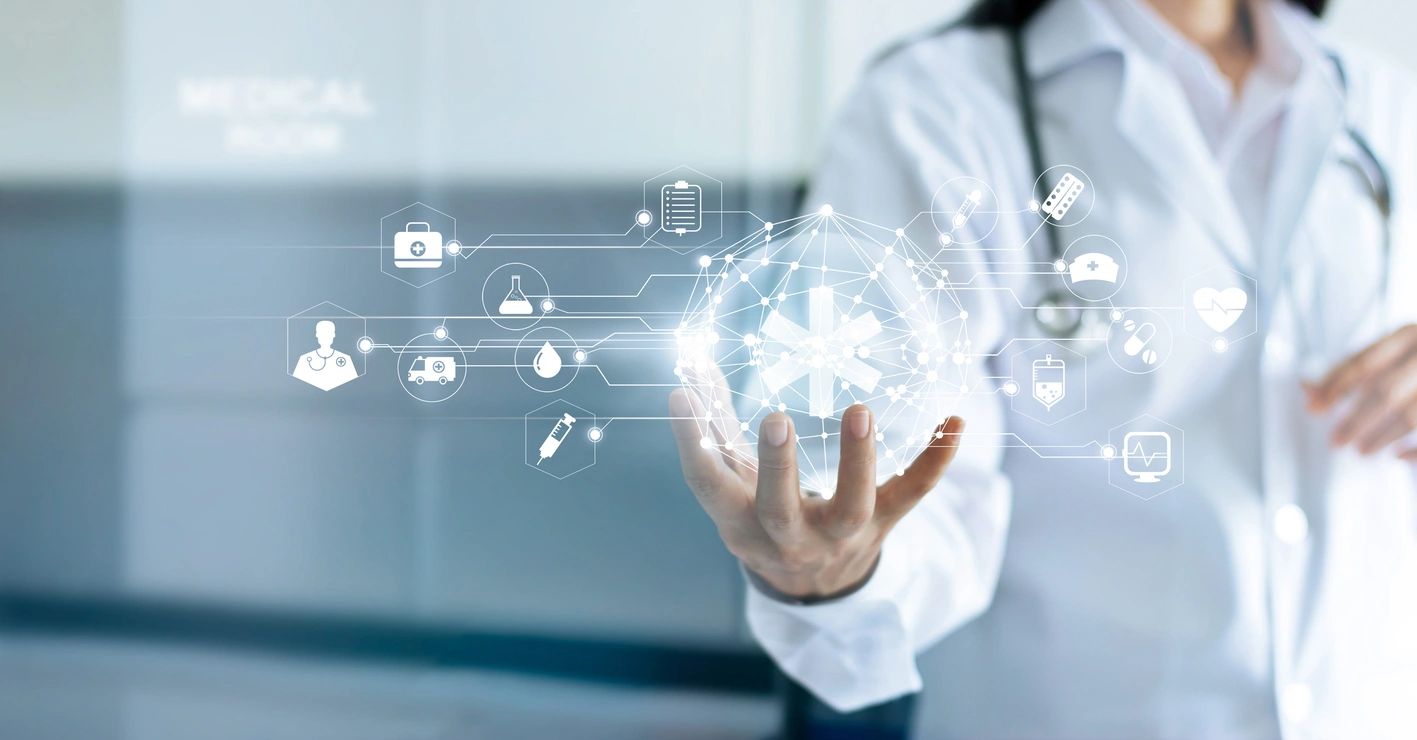In the Age of Generative AI, Will the Insatiable Need for Data Trigger a Reckoning for Healthcare?
July 10, 2023 | Beth Crocker | Articles, Blog

Several weeks ago, I had the honor of sitting among some of the finest minds in healthcare and engineering to learn about the Future of Digital Health presented by the Center for Health Innovation at UCSD Health. Funded in large part by San Diego philanthropists Joan and Irwin Jacobs, the Center intends to be a driving force in the transformation of healthcare. Among the many mind-blowing uses of AI presented at the event was the effort to minimize sepsis-related deaths at UCSD Health. In his presentation, Dr. Christopher Longhurst shared that they have the one of the lowest incidences of sepsis-related deaths in the nation. Using AI and copious amounts of patient data, they can now predict which patients are at the highest risk of sepsis, enabling physicians to proactively treat it before sepsis sends a patient into organ failure.
The use of data and AI is revolutionizing the way healthcare providers deliver care, improve patient outcomes, and reduce costs, and the city of San Diego – sitting at the nexus of healthcare, biotech, and engineering – is poised to be at the forefront of this transformation. AI-enabled healthcare initiatives are improving the lives of patients suffering from conditions ranging from hypertension and diabetes to depression and chronic pain.
At the core of every healthcare AI initiative is the insatiable need for patient data. Prediction of the future requires a detailed picture of the past, painted in vivid color using real-time information, pulled from every touch point within the healthcare ecosystem, from hospitals and clinics to social services, food banks, rehabs, labs, as well as wearable devices like your watch, your ring, and your phone (thank you, Irwin Jacobs). The healthcare industry generates massive amounts of data, but much of this data is siloed in different systems and formats, making it difficult to exchange and share. While healthcare interoperability solutions enable data to be accessed and analyzed across different healthcare organizations and systems, the industry has been slow to adopt automation options that extend beyond the walls of a health system EHR (Electronic Health Record). Interoperability is particularly important for AI in healthcare, as AI algorithms require copious amounts of data to train and improve accuracy. By sharing data across systems, AI can access more comprehensive datasets, improving the accuracy and effectiveness of its insights and recommendations, and reducing bias caused by a dearth of information for a particular group, ethnicity, or gender.
Healthcare providers leveraging AI will have a few options to architect their massive data collection models, with converging data into their EHR or an HIE (Health Information Exchange) the frontrunner. That said, the effort to access and transfer patient data into a single electronic healthcare record system (EHR) may prove cost prohibitive. Historically, attempts to consolidate into a single EHR have been less than ideal, with the majority of smaller ancillary providers sticking with paper to avoid the excessive cost and technical complexity of what amounts to pounding a colossal square peg into many tiny round holes.
While application programming interfaces (APIs) are often used to facilitate data sharing and interoperability in healthcare, they can be cumbersome, clunky, and limited. APIs may not be able to capture all data necessary for effective AI in healthcare, as they may only allow for the transfer of certain types of data or limited subsets of patient information. As healthcare providers and organizations work to improve interoperability, they must consider the limitations of existing technologies and explore innovative solutions to facilitate seamless and secure data exchange.
As an alternative, providers have an opportunity to apply a distributed model of data management, crowdsourcing patient information from wherever it lives, using a smart browser and a simple patient object model to securely access the data and deliver it to wherever it needs to go in real-time.
Enter Shadowbox.
Shadowbox’s instant automation platform offers a secure “browser-like” platform that enables healthcare professionals to access multiple applications, including EHRs, lab portals, billing systems, payer portals, and even government databases without APIs. Secure and seamless access to patient data allows users to obtain all the information they need in real-time, at the time that the transaction happens. By eliminating the need for multiple applications to be open simultaneously and reducing the errors or delays in manual data transfer, our platform improves efficiency and enhances the overall quality of healthcare delivery, all at a fraction of the cost. The transformation of the healthcare industry is underway, with UCSD Health’s Center for Health Innovation leading the way in utilizing AI and addressing healthcare interoperability challenges. As the industry embraces data and AI, we can expect continued progress in improving patient outcomes. Platforms like Shadowbox offer secure and real-time access to diverse healthcare applications, empowering professionals to deliver superior care. The future of data-driven healthcare is promising and within reach.
By Beth Crocker
Beth is co-founder and CFO of Shadowbox. She has spent over three decades leading finance teams for tech companies, including Rovi Corporation (now Tivo), McAfee, CrossWorlds Software, uCast Global, and IDG Books Worldwide and provided M&A services for public companies such as Digital Realty and PriceSmart. Her track record includes two successful IPOs and over 30 M&A transactions.
Additional articles by Beth Crocker →
